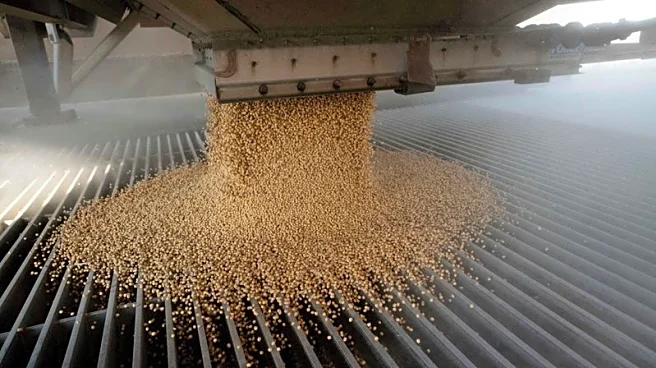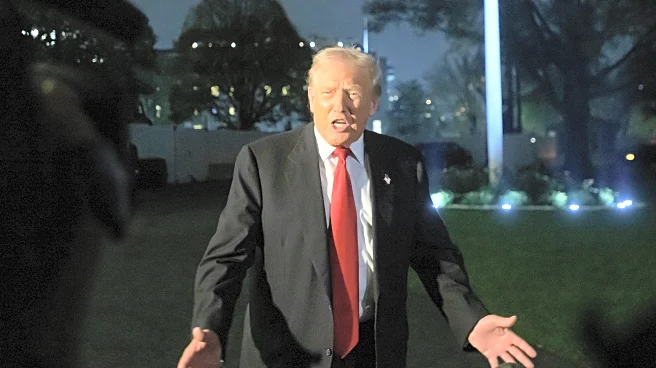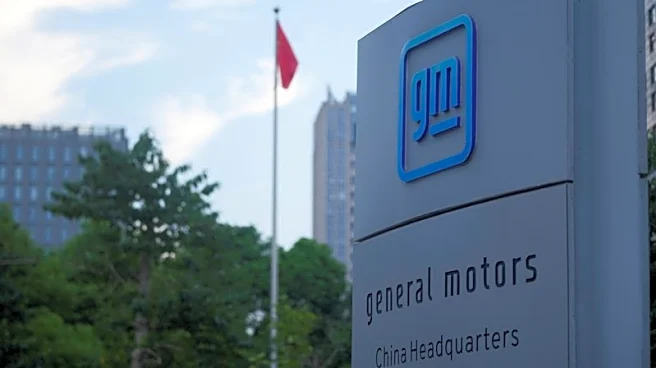By Naveen Thukral and Ella Cao
SINGAPORE/BEIJING (Reuters) -China is grappling with a glut of soybeans after months of record imports, curbing prospects for U.S. exports despite a recent trade truce that
Washington said includes a pledge by Beijing to resume heavy purchases.
Traders and analysts warn that vast stockpiles at ports and in state reserves, coupled with weak crush margins, limit Beijing's appetite for further purchases.
"State firms may be waiting for margins to recover before making large-scale purchases," said Johnny Xiang, founder of Beijing-based AgRadar Consulting. "Even with tariff waivers, margins remain negative and Brazilian beans are still cheaper."
After President Donald Trump met Chinese leader Xi Jinping last month officials in Washington said China had agreed to buy 12 million tons of U.S. soybeans by year-end and 25 million tons in each of the next three years.
China has not publicly committed to making purchases, although it suspended retaliatory tariffs on U.S. imports, while state buyer COFCO has booked only a few cargoes for December and January shipment, traders and analysts say.
SURGING STOCKPILES, SHRINKING MARGINS
Chinese buyers sharply boosted soybean purchases from South America earlier this year, while shunning those from the United States, fearing a shortfall if the trade war with Washington dragged on, leading to oversupply.
Soybean stocks at Chinese ports reached a record 10.3 million tons on Nov.7, up 3.6 million tons on the year, while processors, known as crushers, held 7.5 million tons, the most since 2017, data from Sublime China Information showed.
Physical prices for soymeal, used to fatten animals in the world's biggest pig producer, have dropped more than 20% from an April peak in key coastal regions, to hover around 3,000 yuan ($421) a ton, Mysteel data showed.
Such areas are the northern region of Tianjin, the eastern provinces of Shandong and Jiangsu and southern Guangdong.
Chinese crushers have faced losses since mid-year, with a negative margin this week of about 190 yuan a ton in the processing hub of Rizhao, and traders expect margins to stay negative until at least March.
"There is not much room for China to increase soybean imports," said a trader at an international house that runs oilseed processing units. "Soybean stocks are huge and demand for the feed sector is very slow."
LITTLE SIGN OF BIG BUYS
Market expectations for state grain importers COFCO and Sinograin to quickly resume significant purchases as a goodwill gesture after the trade talks have yet to materialise.
It is still possible that state firms could make large purchases despite market conditions.
"The administration expects our trading partners to adhere to their deal commitments," a U.S. official told Reuters.
"The president reserves the right to adjust tariff rates, export controls, and other concessions to hold our trading partners accountable to their deal commitments."
China's commerce ministry did not immediately respond to a request for comment.
China's grain and oilseed stocks are a state secret, but at least two traders estimated soybean inventories held by state companies at about 40 million to 45 million tons.
That would be double China's U.S. imports last year and sufficient for five months of typical early-year demand.
Private importers have continued to book Brazilian cargoes for December shipment. Brazilian soybeans for January shipment were quoted at around $480 a ton, including cost and freight to China, compared with $540 to $550 a ton for U.S. cargoes.
Chinese importers have booked about 2 million tons of soybeans for December shipment, covering more than 40% of the month's projected demand, while January bookings remain slow, traders said.
"There's very little indication that state buyers are engaged in a program to purchase 12 million metric tons ahead of the end of this year, let alone 25 million tons more for calendar year 2026," Arlan Suderman, chief commodities economist at StoneX, wrote in a note on Tuesday.
($1=7.1230 Chinese yuan renminbi)
(Reporting by Naveen Thukral in Singapore and and Ella Cao in Beijing; Additional reporting by Trevor Hunnicutt in Washington; Editing by Clarence Fernandez)












